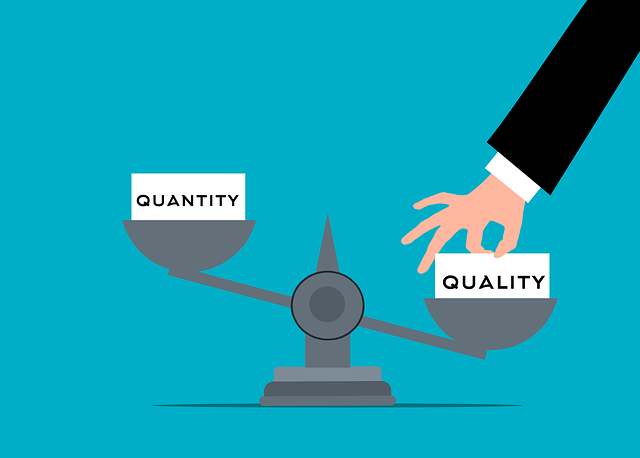Wegovy vs. Ozempic: Key Differences & Considerations for Weight Management
Both Wegovy and Ozempic are GLP-1 receptor agonists, but they differ in dosing (weekly/twice-a-month injections), administration methods (tablets vs. injections), potential side effects, and cost dynamics. Wegovy offers appetite suppression and initial gastrointestinal benefits with once-daily tablets, while Ozempic slows gastric emptying for longer satiety alongside occasional injection site reactions. Choosing between them depends on individual preferences, lifestyle, insurance coverage, and long-term budget considerations. Comprehensive evaluation of their mechanisms, user experiences, and sustainability is crucial for an informed decision.
“Considering weight management medications? Wegovy and Ozempic are popular choices, but understanding their costs is crucial before making a decision. This comprehensive guide delves into the intricate details of these prescription drugs, focusing on a direct comparison: Wegovy vs. Ozempic. From active ingredients and administration methods to long-term expenses and patient accessibility, we explore factors influencing your choice. By weighing the benefits against the costs, you can make an informed decision regarding these game-changing weight management tools.”
Understanding Wegovy and Ozempic: A Comprehensive Overview

Wegovy and Ozempic are both prescription medications designed for weight management, but they differ in their mechanisms of action and overall approach to treating obesity. Wegovy, also known as semaglutide, is a glucagon-like peptide-1 (GLP-1) receptor agonist that mimics the effects of a natural hormone produced by your body. This medication helps reduce appetite, increases feelings of fullness, and slows gastric emptying, leading to decreased food intake and weight loss. On the other hand, Ozempic, containing semaglutide as well, is also a GLP-1 receptor agonist but with a slightly different formulation and dosage.
When comparing Wegovy versus Ozempic, one key factor is their dosing regimens. Wegovy is typically administered once weekly through subcutaneous injection, while Ozempic is usually given once every two weeks by injection. Both medications show significant effects in aiding weight loss when combined with a reduced-calorie diet and increased physical activity. However, the convenience of less frequent dosing with Ozempic might be an appealing factor for some users. Additionally, they may have different side effects; Wegovy is known to cause more gastrointestinal issues initially, but these often subside over time, while Ozempic may lead to mild injection site reactions.
Active Ingredients and Their Mechanisms of Action

Wegovy and Ozempic are both prescription weight-management medications, but they have distinct active ingredients and mechanisms of action. Wegovy (semaglutide) works by mimicking a natural hormone called GLP-1, which increases feelings of fullness and reduces appetite, leading to decreased food intake and weight loss. In contrast, Ozempic (semaglutide) is also a GLP-1 receptor agonist, but it operates slightly differently. It not only promotes satiety but also slows gastric emptying, causing food to stay in the stomach longer, which contributes to a sense of fullness for a more extended period.
These differences in mechanisms underpin some variations in their effectiveness and potential side effects. While both drugs can lead to significant weight loss when taken as directed, understanding these mechanisms is crucial for consumers navigating Wegovy versus Ozempic, especially those considering which option aligns best with their individual health needs and preferences.
Dosage Forms and Administration: Tablets vs. Injections

When comparing Wegovy and Ozempic, one key consideration is their dosage forms and administration methods. Wegovy is available in tablet form, making it convenient for many patients to take once daily with or without food. This oral administration offers a straightforward and accessible way to manage weight. In contrast, Ozempic is an injection that requires a healthcare provider’s assistance. Patients typically receive these injections every week or two, adding a layer of complexity to the medication regimen compared to Wegovy’s simple tablet format.
The choice between tablets and injections depends on individual preferences and lifestyle. Tablets provide ease and flexibility for self-administration, while injections might be more suitable for those seeking consistent blood level control with less daily decision-making involved in dosing. This difference in administration methods highlights a critical aspect of the Wegovy versus Ozempic debate, influencing patients’ overall experience and adherence to their weight management treatment plans.
Cost Analysis: Initial Purchase Price Comparison

When comparing Wegovy and Ozempic in terms of cost, the initial purchase price is a significant factor. Both medications are prescription-only weight management drugs, but their pricing can vary greatly. Wegovy, with its brand name semaglutide, often carries a higher upfront cost at the pharmacy compared to Ozempic (semaglutide). This difference in pricing is due to various factors, including brand exclusivity and marketing strategies. However, it’s essential to consider that both medications are available through different insurance plans and pharmacy programs, which can significantly impact the overall cost for individual patients.
The initial investment for Wegovy versus Ozempic might appear as a barrier, but long-term savings should be taken into account. While the price difference at purchase may be notable, consistent use and adherence to the prescribed dosage could lead to comparable or even lower total costs over time, especially when considering potential discounts, coupons, or patient assistance programs offered by manufacturers.
Long-Term Expenses: Insurance Coverage and Rebates

When comparing long-term expenses between Wegovy and Ozempic, insurance coverage plays a significant role. Both medications offer savings through rebates and copay programs, but the specifics can vary widely depending on your insurance plan. It’s crucial to check with your provider for details on in-network and out-of-pocket costs, as well as any restrictions or requirements for receiving these discounts.
Understanding the dynamics of insurance coverage and rebates is essential when choosing between Wegovy versus Ozempic. By evaluating these factors, you can better anticipate ongoing expenses and make an informed decision based on your financial reality. This approach ensures that cost-effectiveness isn’t just a short-term consideration but aligns with your long-term healthcare budget.
Patient Accessibility and Availability

When comparing Wegovy and Ozempic, patient accessibility and availability play a significant role in making an informed decision about weight management medications. Both drugs are prescription-only, but their routes of administration differ. Wegovy is administered via oral capsules, making it more accessible for patients who prefer not to inject. This convenience could encourage adherence to the treatment regimen, as changing or missing injections can be a barrier for some individuals.
On the other hand, Ozempic, being an injection, requires regular visits to healthcare providers or pharmacies for refills. While this might be less convenient for some, it also ensures a consistent supply of medication. Patients with limited mobility or those who prefer not to self-inject may find Wegovy’s oral administration more suitable. In contrast, Ozempic’s injection format could appeal to folks accustomed to regular injections or those seeking a quicker dispel method.
Potential Side Effects and Consideration for Comorbidities

When considering Wegovy versus Ozempic, it’s crucial to understand that both weight-loss medications have different profiles when it comes to potential side effects. Common adverse reactions for Wegovy (semaglutide) include nausea, vomiting, diarrhea, and abdominal pain—often referred to as gastrointestinal disturbances. These symptoms tend to be more prevalent during the initial stages of treatment but usually lessen over time. On the other hand, Ozempic (semaglutide), a similar medication, may cause hypoglycemia when used in conjunction with insulin or other medications that affect blood sugar levels. It’s also important to note that both drugs have been linked to pancreatitis and kidney problems in rare cases.
Comorbidities play a significant role in the choice between Wegovy and Ozempic. Individuals with certain medical conditions, such as diabetes, should exercise caution when selecting a weight-loss drug. Both medications are approved for people with obesity or overweight status with comorbidities like type 2 diabetes. However, the management of these conditions may require adjustments during treatment. Patients taking either Wegovy or Ozempic should closely monitor their blood sugar levels and consult their healthcare provider if they experience any concerning symptoms, ensuring a safe and effective weight-management journey tailored to their unique health needs.
User Experience and Patient Satisfaction Studies

User experience and patient satisfaction studies offer valuable insights into how individuals perceive and interact with Wegovy and Ozempic, two prominent weight management medications. These studies often include surveys and interviews with patients who have used either drug, providing qualitative and quantitative data on various aspects such as ease of use, side effects, and overall effectiveness in achieving weight loss goals.
Comparing user experiences between Wegovy and Ozempic reveals notable differences. Patients using Wegovy frequently report easier administration, often due to its once-weekly injection schedule, whereas Ozempic users may find the daily injection routine more cumbersome. Satisfaction levels can also vary based on individual preferences for side effects; some patients might favor Wegovy’s reported lower incidence of gastrointestinal issues, while others could prefer Ozempic’s potential for reducing hunger pangs. These studies collectively contribute to understanding the nuances that impact patient choices between these two weight management treatments.
Making an Informed Decision: Factors to Weigh Before Purchasing

When considering Wegovy versus Ozempic, making an informed decision requires weighing several key factors. First, cost is a primary concern. Compare the prices of both medications at your preferred pharmacy, taking into account any insurance coverage or discount programs that might apply. Second, efficacy and side effects play a significant role in your choice. Both Wegovy and Ozempic are prescribed for weight management, but they work differently. Understand how each medication helps with appetite control and weight loss, along with any reported side effects to ensure it aligns with your needs and lifestyle. Additionally, consider convenience. Examine the administration methods—are injections or oral tablets more suitable for your routine? Lastly, don’t overlook long-term sustainability. Look at clinical studies and user reviews to gauge patient satisfaction and adherence over time.
